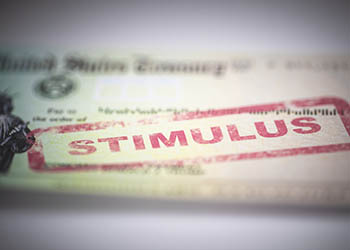- By:
- Category:

Sacramento, CA, December 14, 2022 — New research shows the results from a state-wide outreach campaign to inform nearly 430,000 low-income Californians about federal stimulus payments they might otherwise miss and to connect them to a simplified tax filing tool in order to file their taxes and claim the payments.
During the Fall of 2021, Californians who were enrolled in safety net programs (CalFresh or CalWORKs) and who were identified as being likely to miss out on the federal stimulus payments, received recorded voice messages or emails from the California Department of Social Services (CDSS), informing them of their likely eligibility and directing them to the simplified filing tool at GetCTC.org. CDSS partnered with The People Lab, California Policy Lab, and Code for America to conduct and evaluate this outreach campaign.
Through a randomized evaluation, the researchers tested the impact of receiving the emails or phone calls; emphasizing the availability of the SimplifyCT tax filing hotline through which callers could receive live assistance with the filing process; and different language in the messages on claiming of the stimulus payments. Households that received an email were more than five times as likely to submit a return than households that did not (2.38% vs. 0.43%), and households that received a recorded voice message were more than twice as likely to submit a return as those that did not (0.22% vs. 0.09%).
In the weeks after the CDSS emails and recorded voice messages went out, recipient households filed 3,575 tax returns, covering 7,251 individuals and yielding $13.3 million in estimated refunds (with an average refund amount of $3,761). Although some of these returns might have been filed even without the outreach, the researchers estimate that the outreach led to between 631 and 2,864 additional returns that would not have been filed otherwise, yielding between $2.4 million and $10.6 million in total additional refunds.
“This campaign demonstrates the power of collaboration, using existing administrative data, targeted outreach, and rigorous evaluation,” explains Jessica Lasky-Fink, co-author of the policy brief and the Research Director at The People Lab. “We learned a lot from this campaign that can inform future campaigns and efforts to connect low-income Californians with valuable safety net benefits.”
“This experiment shows the potential in linking data to both better target outreach on the front-end and to then measure the impact of that outreach after the experiment,” adds co-author Jesse Rothstein, Carmel P. Friesen Chair in Public Policy at UC Berkeley and the faculty director of the California Policy Lab’s UC Berkeley site. “Even under our most conservative estimates, the benefits far outweighed the costs, and we’re thrilled to see this helped low-income Californians get their credits.”
“We’ve learned in the last two years what an asset simplified tax filing is in delivering vital tax benefits to the hardest to reach families,” comments Gabriel Zucker, Associate Policy Director for Tax Benefits at Code for America. “We’re thrilled to see this research rigorously prove that, with a simple and streamlined tax filing process, broad outreach campaigns can move the needle in getting benefits to the people who need them.”
In discussing the implications of the research, the research team explains that there remains a large, remaining non-filer gap that will require higher-touch methods to close. They suggest that future outreach efforts and evaluations should aim to better understand the role of trust and credibility, the impact of using live assistance, the specific barriers to tax filing that families might face, and which populations are most responsive to which types of outreach.
Key Research Findings
1. Households that received an email were more than five times as likely to submit a simplified return than households that did not (2.38% vs. 0.43%), and households that received a recorded voice message were more than twice as likely to submit a simplified return as those that did not (0.22% vs. 0.09%).
2. Considering the per-unit cost of outreach (not including the fixed cost of the platform or labor costs), every $1 spent on delivering recorded voice messages generated an estimated $52 in additional refunds to CDSS non-filing households. Every $1 spent on delivering emails generated an estimated $10,737 in additional refunds.
3. Recorded voice messages that emphasized the availability of live assistance did not significantly impact return initiation or submission rates relative to other messages without this emphasis, although they did yield an increase in calls to the SimplifyCT tax filing hotline. Among emails, messages that emphasized the simplified filing process did not yield significant differences in return initiation and submission relative to messages that emphasized that the tax credits belong to the recipients (priming psychological ownership), though both were effective relative to no email.
